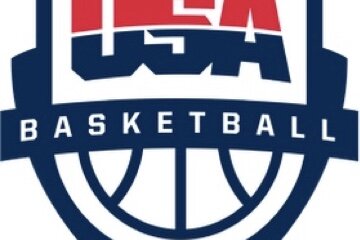As always there’s been a knee jerk reaction to the recent announcement that the NCAA has a working committee in place regarding legislation surrounding the transfer process. Every time this particular topic comes up a multitude of people are quick to jump on the bandwagon calling for a solution that they quickly prove they’ve given very little thought to. Contrary to popular belief changing home courts isn’t the inherent athletic “birthright” many claim it to be. Opening the door to immediate eligibility comes with far more speedbumps and potholes than a late night tweet from the White House.
Before we wade too deep into this discussion let’s dispense with the ludicrous, de-facto go-to argument that “coaches can leave without penalty” so, in turn, players should be entitled to as well. I sincerely don’t want to open Pandora’s Box surrounding another frequent argument but coaches are employees and athletes are not. Yes, I hear the rumblings and feel the knives already but the reality is that players don’t actually want that designation. You really want to be an employee? Keep in mind that those on “payroll” don’t get to pick and choose the terms of their employment status unless their name happens to be Nick Saban.
Employment, by definition, comes with that inconvenient little caveat that you can, and should be, terminated for poor performance. I haven’t recently heard anyone actually calling for scholarship renewal to be tied to shooting percentages and turnovers. Go a step further. With an employee designation rather than that of student, you may have to pony up the taxes on the combined value of your scholarship to good ole’ Uncle Sam and in some instances the state you reside in. It now becomes “compensation” rather than that tax free scholarship. It’s not just room, board, tuition books and fees either. That “cost of attendance” check that has been such a nice, new addition now becomes taxable income plus all that gear carries a value as does many of the other “perks” provided while residing on a collegiate roster. The tax return of a student athlete would begin to make the IRS look a whole lot worse than the NCAA has ever appeared to be.
Classifying athletes as employees has big picture ramifications that are often overlooked and far outweigh the possible advantages such a move might bring. Also, don’t forget that as an employee you’ll have Social Security to contribute to and some universities mandate a minimum contribution to a retirement fund for all “employees” based on the value of your income. Let’s not even open the door on healthcare least we venture further still from the actual topic at hand…transfers.
There’s no argument that a coach’s ability to suddenly abandon ship and the players they’ve offered their undying allegiance to leaves a bad taste in the mouth of any orphaned athlete bound by the year of residency attached to a transfer of their own. All the recent conversation seems to revolve around the removal of that year of residency. There’s also discussion of a component that would negate the necessity of getting permission to talk with an athlete considering a change of address. The sheer insanity of that second element alone tells you that the conversation is lacking in foresight and a real world understanding of the complications of such a move.
As always, it again seems that the NCAA’s focus is akin to that of modern medicine. Treat the symptoms rather than the cause. Ice it…take a pill…put a band aid on it…but god forbid we ever look deeper to the actual genesis of the problem. If the current transfer procedure has become a growing issue of concern it’s only because the initial decision making process has emerged as a far greater one.
The shameful reality of the ever growing number of transfers necessitates a closer look by any well thought individual at the factors actually leading to that increased exit ramp traffic rather than simply repaving the road for them. Everything on the table appears geared towards making transfers a far less encumbered process with fewer hoops to jump through and ultimately the elimination of that annoying penalty box price tag. It’s still a short sighted and narrow view to think that providing a quicker route to a new destination is a resolution without consequences of its own.
Recent, current and upcoming generations of athletes are getting a piss poor education from those responsible for the comprehension of decisions and their subsequent ramifications. Elevated transfer rates go hand in hand with an escalation of bad choices on the front end. If any entity (coaches, schools, athletes, parents and yes…even the NCAA) is genuinely concerned about the transfer “problem” they’ll find a way to help recruits make better choices up front rather than providing them a free pass after the fact. Offering a shorter path to a “do-over” is tantamount to including the contact information of a good divorce lawyer in a wedding card.
Yes, yes, yes…I hear those voices out there already. There are folks already jumping up and down and pointing out the blatantly obvious. Thanks in advance for the subtle reminder as well as the assumption that my 57 years comes with insufficient memory on my internal hard drive. Please don’t take out that contract on my life just yet. Of course there are multiple and legitimate reasons to transfer beyond an uneducated, rushed or ego driven decision. It’s a given and goes without saying. And yes, as I acknowledge every time I go down this road, there are far more recruiters than anyone is willing to admit that will pledge, promise and portray virtually anything to get a signature on the NLI dotted line.
However, in the end, the ultimate responsibility for any decision lies with the one making it. The recruiting process has been refined time and again affording more access to contact, information and fact checking than any recruit or parent could ever need. It’s their responsibility to do the extensive homework and confirm the claims they’re hearing.
Should they choose to blindly take a coaching staff at their word and get caught up in the elaborate choreography and production they’re immersed in…they do so at their own risk. Nowhere in athletics, academics or life is integrity a guarantee. Choosing to “drink the Kool-Aid” and not talk with all current players (not just those made available by the staff), graduated athletes or even track down transfers makes it tough to point the finger at anyone other than who they see in a mirror should things not work out.
The wild, wild west landscape that the unbridled freedom to explore transfer possibilities would create along with the imprudent decisions bound to follow sans a year of residency would short change athletes, coaches and programs alike. That process that everyone finds so abusive of a player’s rights has not prohibited any individual from leaving. However, what it has done is make an impulsive person think twice before overreacting to a tough week of practice or a benching on a cold shooting night. It’s challenged an underachieving athlete to work harder rather than pack the bags in search of a path of lesser resistance. It’s forced a homesick teenager to tough it out a little longer while facing up to the reality of cutting the cord and growing up a bit. A transfer doesn’t cost an athlete eligibility and if the possibility of a yearlong time out is the impetus for a better decision on the front end or leads to rational objectivity during a tough time…it serves a purpose.
It’s also important to remember at times that NCAA rules are essential for competitive integrity. Revolving doors don’t work in Washington, D.C., why would they work in the locker room? If players begin looking for and possess the opportunity to “upgrade” from the very moment they get on campus, there may be a new Grand Canyon sized gap between the “haves” and the “have nots”. As soon as a top 20 program loses a player to academics, injury or religious cult there’s going to be a rush to the phones from hopefuls across the country whose programs had no idea that their star’s version of “all in” was not quite what they envisioned it to be. Worse yet, their coaches and teammates might be in the dark thus inhibiting their own recruiting efforts, team building and chemistry. The odds of a mid-level program keeping that “sleeper” they saw something in or the project player they took a chance on and developed become the same as the Trumps and Obama’s vacationing together next summer on the Jersey Shore.
Here’s a thought. How about we force the “self-promotion” trend to sit out a year of residency instead. Call it a refocusing of priorities. Let’s stop wasting time announcing and tweeting offers or publicizing who showed up at open gym and practice. Spending that energy and effort instead on researching those options rather than beating the chest over them just might be more productive in the long run. Instead of going on-line to post that workout video maybe try to be more constructive in getting additional needed recruiting insight and answers. There’s nothing to be more proud of than a lasting, well thought decision. Sitting out a year of residency isn’t much of a concern for an athlete if there’s no transfer in the first place. Plus, it’s a lot cheaper than having to re-stock an entire family wardrobe of t-shirts, hats and sweats.
Again I’ve strayed from the topic at hand…to a degree. The reality is that we’ve reached a saturation point of “making it better” for those who come next. Subsequently we’re actually shortchanging them when the final buzzer goes off and they step out of the arena and into the real world. Yeah, I know this message is again a far reach from releases, transfers and residency. But this isn’t simply an athletic matter, it’s an educational theory. Imagine that, actually trying to teach and prepare young people by way of…you know…that accountability thing. What a concept! Truth be told, as a society we expect so little of the next generation and try to smooth the way for their inevitable rough patches that we have no one to blame but ourselves for that all too common (and oh-so pleasant) attitude of entitlement.
For anyone who cares, my two cents on transfer guidelines remains the same. I think we actually need to find a way to make it more difficult and add some sharper teeth to the process. If a prospective student athlete knows that the road to a transfer carries an Everest like uphill battle or a heavy price tag then just maybe those troublesome initial decisions we’ve been seeing might find the focus, patience and emphasis that they warrant. When a young person understands that decisions come with consequences and they won’t be bailed out by parents, coaches or our friend Big Brother in Indianapolis…we’ll finally be on our way to accomplishing our true goal.
Mark Lewis is a national evaluator and photographer for Blue Star Basketball as well as the lead columnist for Blue Star Media. Twice ranked as one of the top 25 Division I assistant coaches in the game by the Women's Basketball Coaches Association (WBCA), he logged 25 years of college coaching experience at Memphis State, Cincinnati, Arizona State, Western Kentucky and Washington State. Lewis serves as a member of the prestigious McDonald’s All-American selection committee as well as the Naismith College Player and Coach of the Year committees.






